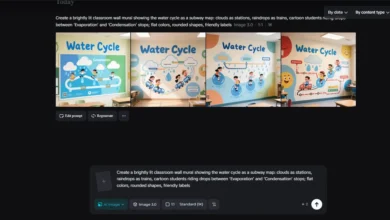
Today’s children are much more easily exposed to good and bad online content. The web offers educational resources and entertainment, but also carries with it risks such as exposure to the wrong materials, cyberbullying, and mental health and academic performance, and you ran the risk as well. Effective web filtering through parental control software is necessary as a means to protect children from these online threats.
Web Filtering Software Features
There are different features to look out for when choosing the best parental control software for you or your family. Key aspects to evaluate include:
Blocking Capabilities
Good filtering tools that block access to inappropriate websites, apps, and content categories should be effective. Real-time analysis enables dynamic detection and prevention of exposure to harmful material.
Customization Options
It’s important to be able to tailor restrictions to a child’s age, maturity level, and specific needs. Parents have customizable filters, time controls that adjust up and down as children grow older, and restrictions specific to particular apps.
Multi-Device Support
Children have many devices, including smartphones, tablets, and computers. Having parental control software that works on multiple platforms ensures that information is in the same place regardless of the device.
Ease of Use
Setup and management of web filtering settings are simple thanks to an intuitive interface that’s easily understood by parents regardless of their level of technical expertise.
Comparing the Best Parental Control Apps for Web Filtering
Several parental control applications offer robust web filtering features. Below is an in-depth analysis of some leading options:
Aura
Aura is a comprehensive digital security solution with parental controls as part of its family protection package.
Strengths
Content-Specific Blocking: Aura allows parents to block specific websites, apps, and even particular YouTube channels, providing granular control over accessible content.
User-Friendly Interface: Aura’s intuitive design makes it easy for parents to navigate and configure settings without requiring technical expertise.
Limitations
Bundled Features: Aura’s parental controls are part of a broader suite that includes identity theft protection, antivirus, and VPN services. While complete, this may be more than some parents need if they’re solely interested in web filtering.
Cost: Including multiple services can make Aura more expensive than standalone parental control solutions.
Qustodio
Qustodio is a known parental control app, dedicated to the most complete monitoring and filtering capabilities.
Strengths
Detailed Activity Reports: Qustodio’s best feature is its capability to provide full insights into a child’s online activities, including browsing history, app usage, and screen time, to help parents monitor and manage their child’s digital behavior.
Cross-Platform Support: Apps like Android, iOS, Windows, macOS, and Kindle support all operating systems to maintain the same device protection.
Customizable Filters: Parents can enforce age-appropriate filters or even block individual websites and categories to meet each child’s individual needs when online.
Limitations
Premium Pricing: Qustodio has a free version with basic features, but if you want to track things like social media or location, it’ll cost around $75 per year per family member, which isn’t cheap for many people.
iOS Limitations: As with any mobile platform, iOS devices have feature limitations, such as SMS and Call monitoring.
With its sensitive monitoring features and customizable parental filters, Qustodio is a pretty star for parents looking for a well-balanced control of their children’s online activities.
Net Nanny
Net Nanny is recognized for its intelligent content filtering and real-time monitoring capabilities.
Strengths
Dynamic Content Analysis: Net Nanny uses real-time analysis to assess and block inappropriate content, even on previously unclassified websites, ensuring up-to-date protection.
Social Media Monitoring: The app monitors social media platforms for concerning activity, helping parents stay informed about their child’s online interactions.
Family Feed Dashboard: Net Nanny offers a centralized dashboard displaying all family members’ online activities, providing a holistic view of internet usage.
Limitations
Feature Variability Across Platforms: Some features, such as location tracking, are unavailable on desktop platforms, potentially limiting functionality for families using non-mobile devices.
Performance Issues: Users have reported occasional crashes and performance lags, which can disrupt monitoring and filtering processes.
Net Nanny’s real-time content analysis and social media monitoring make it valuable for proactive online safety management.
Bark
Bark focuses on monitoring children’s online communications to detect potential issues like cyberbullying, sexting, and signs of depression.
Strengths
Comprehensive Monitoring: Bark monitors a wide range of platforms, including social media, emails, and text messages, for potential risks, providing parents with context and recommendations in alerts.
AI-Powered Alerts: The app uses artificial intelligence to analyze language and detect concerning patterns, ensuring timely and relevant notifications.
Respect for Privacy: Bark balances safety with privacy by alerting parents only to potential issues rather than providing full access to all communications.
Limitations
Limited Direct Control: Bark focuses on monitoring and alerting rather than allowing parents to block specific websites or apps, which may not meet all families’ needs for direct intervention.
Platform Restrictions: Due to Apple’s restrictions, some features are limited on iOS devices, affecting the app’s overall functionality on these platforms.
Bark is particularly suited for parents concerned about their child’s online interactions and mental well-being. It offers insights and alerts to facilitate open communication.
Safes
An all-in-one parental control app with limitlessness filtering and a friendly user interface: safes.
Strengths
AI-Powered Filtering: Safes use artificial intelligence to dynamically block bad stuff, adapting to new vectors of attack that strike the surface.
Cross-Platform Compatibility: It fully supports a list of devices and operating systems, including Android, iOS, Windows, and macOS, so the protection remains the same.
Customizable Restrictions: Through time, location, and age-based restrictions, parents can define personalized restrictions to keep their kids online safely and effectively.
Detailed Reports: In addition to comprehensive browsing habits and app usage reports, Safes offers reports on screen time, making it easy for parents to make informed decisions about their children’s digital activities.
Limitations
Free Version Limitations: Like most other plans, Safes’ free version provides fewer features than its premium plans and might require a subscription to enjoy them fully.
Learning Curve: Some users may require time to get accustomed to setting up and configuring all features to finalize some things.
Safes Parental Controls is a distinguished parental control solution that provides comprehensive and adaptable features with a balance of convenient design that strikes a strong tone for families looking for fortified web filtering and monitoring tools.
Alternative Methods for Blocking Websites
Parents have other tools for blocking websites in addition to parental control apps. While these methods can help, they often lack the flexibility and depth provided by software designed specifically for this purpose.
Browser Extensions
Certain web browsers, like Firefox and Opera, allow users to install extensions like BlockSite. These add-ons let parents block access to certain websites directly within the browser. For Android users looking for detailed guidance, check out blocking websites on Android for steps to block content across multiple methods.
Host File Modification
Parents with technical expertise can edit the host file on an Android device to block specific websites system-wide. By adding certain entries to this file, attempts to access the specified sites are redirected, effectively blocking them.
- Advantages: This method works across all browsers and does not require third-party apps.
- Challenges: Editing the host file is complex and carries risks. Mistakes can affect the device’s operation, and the process can be intimidating for those unfamiliar with it.
Security Apps
Certain security programs, such as antivirus software, include website-blocking features. For instance, Trend Micro’s Mobile Security app offers basic content filtering as part of its broader functionality.
- Advantages: Security apps often provide additional protection against malware and cyber threats, offering a more comprehensive safety net.
- Limitations: These tools typically lack advanced customization options and detailed reporting features, which are standard in parental control apps.
Shortcomings of These Methods
While these approaches can block websites, they often don’t provide the level of control or insight that parental control apps offer. They may also be less convenient to use across multiple devices or in households with several children.
Tips for Making the Most of Parental Control Tools
Parental control apps are most effective when combined with thoughtful communication and adaptive rules. Consider these strategies to use them effectively:
1. Discuss the Rules Together
When setting restrictions, involve children in the decision-making process. Explaining the reasons for rules can help them understand and accept them more readily.
2. Adjust Settings Over Time
Children’s needs evolve as they age. Review and update their profiles regularly to ensure that the controls reflect their age and level of responsibility.
3. Use Insights to Start Conversations
Activity logs from apps like Safes can serve as conversation starters. Rather than focusing on enforcement, use the data to discuss healthy digital habits and online safety.
Conclusion
Blocking websites and managing online content is critical for protecting children while encouraging responsible internet use. Various methods, from browser extensions to host file edits, can help, but parental control apps offer the most practical and reliable solution.
Among the top apps, options like Qustodio, Aura, and Net Nanny stand out for their strengths. However, Safes provides a balanced combination of ease of use, powerful features, and flexibility, making it a better choice for parents who want a comprehensive yet user-friendly tool. Families should choose based on their unique needs, but ensuring that tools are paired with open communication is essential for fostering trust and safe habits online.

















